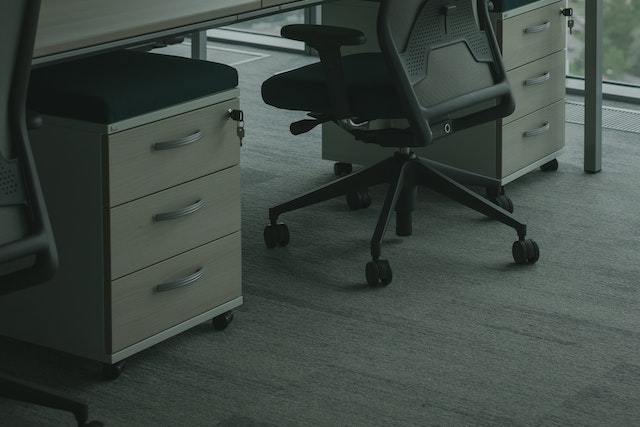In today’s fast-paced world, where remote work and long hours in front of computers have become the norm, creating an efficient and ergonomic workstation is paramount. A well-designed workspace not only enhances productivity but also promotes physical well-being. In this guide, You’ll delve into the key components and practices for setting up an ergonomic workstation that prioritizes comfort, efficiency, and overall health.
The Foundation: Choosing the Right Furniture
Creating an ergonomic workstation begins with selecting the right furniture. The cornerstone of your setup is an ergonomic chair that supports your posture and provides ample lumbar support. A chair with adjustable features such as height, armrests, and backrest angle ensures a tailored fit. Pair this with a desk of appropriate height – one that allows your elbows to rest comfortably at a 90-degree angle while typing. A sit-stand desk can be a game-changer, allowing you to alternate between sitting and standing, reducing the strain on your back and legs during long work hours.
The Importance of Monitor Placement
At the heart of crafting a workspace that harmonizes productivity and well-being lies effective monitor placement. By positioning the screen at eye level and maintaining a distance approximately equivalent to an arm’s length, you create an ergonomic haven that not only shields your neck and eyes from strain but also fosters an environment of enduring comfort. This strategy, complemented by optimizing screen angles to prevent glare, works as a bulwark against the onset of potential eye fatigue, allowing you to work for sustained periods with ease. Furthermore, the introduction of a second monitor elevates multitasking efficiency, elegantly curbing the need for repetitive window switching and streamlining your workflow seamlessly.
Keyboard and Mouse Setup
An often overlooked aspect of an ergonomic workstation is the arrangement of the keyboard and mouse. These tools directly impact your hands and wrists, and improper positioning can lead to discomfort and even repetitive strain injuries (RSIs). Place your keyboard and mouse close enough so that your elbows remain close to your body and form an angle slightly greater than 90 degrees. This positioning helps maintain a natural wrist posture and reduces the risk of carpal tunnel syndrome. Consider using a keyboard tray or a mouse pad with wrist support to further enhance comfort. Remember to keep your wrists straight while typing and avoid excessive bending.
Optimal Lighting Conditions
Proper lighting is not only essential for visibility but also for preventing eye strain and headaches. Natural light is ideal, so position your desk near a window if possible. If not, opt for indirect lighting that evenly illuminates your workspace. Avoid harsh, direct lighting that causes glare on your screen. Adjustable blinds or curtains can help you control the amount of light entering the room. A well-lit environment not only reduces eye strain but also enhances your overall mood and focus.
Personalizing Your Workspace
While adhering to ergonomic principles is crucial, personalizing your workspace is equally important. Decorate your area with items that inspire you and contribute to a positive work environment. Adding plants, artwork, or personal mementos can create a sense of comfort and ownership. Moreover, keep your workspace organized and clutter-free. A cluttered desk not only hampers your efficiency but also adds unnecessary stress. Cable management solutions can help keep your cords and cables tidy, preventing them from tangling and causing potential hazards.
Incorporating Movement and Breaks
No matter how ergonomic your setup is, prolonged periods of sitting can still have adverse effects on your health. Incorporate movement into your routine by taking short breaks to stretch or walk around. Consider using a standing desk to alternate between sitting and standing throughout the day. During breaks, perform simple stretches to relieve tension in your neck, shoulders, and wrists. These small adjustments can go a long way in promoting your overall well-being.
Insights and Takeaways
Creating an efficient and ergonomic workstation is a strategic investment in your productivity and health. The right furniture, proper monitor placement, and a well-arranged keyboard and mouse setup are the building blocks of a comfortable workspace. Remember, an ergonomic workstation is not a one-size-fits-all solution – customize it to your preferences while adhering to ergonomic principles. By prioritizing your physical well-being and adopting healthy work habits, you’re setting the stage for increased efficiency, reduced discomfort, and a more enjoyable work experience.

